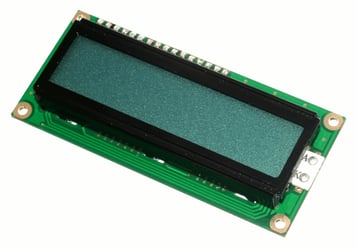If you’ve been using your supplier to provide your LCD displays for some time, but that supplier is no longer meeting the standard of quality you expect and require from your supply chain, it can be damaging to your business and reputation.
Whether due to poor service, defects, component obsolescence, or an inability to meet your demands in terms of supply or turnaround time, you might feel stuck in a situation that’s no longer meeting your requirements of a beneficial supplier relationship.However, your entire product is built around a specific LCD display, designed and manufactured by your current supplier.
The conversation of switching to a new display centers around a massive redesign effort, tooling costs, engineering costs, loss of backwards compatibility, and issues with servicing the spares and the repairs market. There is so much concern over these potential issues that most companies live with ongoing display issues way too long—all to avoid the pain of change of working with a new LCD display supplier.
What options do you really have? Is your supplier the only one that can provide you with the exact LCD displays that you require? Are you trapped in this unhappy relationship forever, forced to put up with unacceptable performance because you feel you have no other choice? Or can you find a supplier who is willing and, more importantly, equipped to match your current display while addressing the original supply chain issues?
Fortunately, the answer is yes. 
A long-term supplier is able to make a commitment to you and your business, as well as support that commitment for the life of your project. The first step is finding and vetting that supplier by asking the right questions:
- 1. Is your required display within their technology core competency?
- 2. Do they have the quality systems in place to ensure consistently high-quality products?
- 3. And finally, how do you fit in compared to the rest of their customers? (You don’t want to be an outlier.)
Matching with Other Standard LCD Displays
Often there are standard display platforms where multiple manufacturers produce the same, or at least similar enough, displays to work in the product application. Transitioning to this other standard display is always a tempting first step. But since the main goal is to avoid jumping right back in the same set of supply chain problems, vetting your next LCD display partner is the most important first step of this process.
Monochrome LCD Matching
Monochrome LCDs are the simplest to match, mainly because the components are fully customizable (with the exception of the LCD driver IC). And in today’s world, there are many compatible versions of each IC, such that a 100% compatible drop-in replacement is almost always available. This puts complete control into the hands of the LCD module manufacturer.
The preferred new supplier can then match the mechanical outline of the current display, create the same point out and electrical interface, and then begin to work on performance metrics. By adjusting the liquid crystal fluid; display settings; polarizers; and circuits, the LCD glass background color; pixel color; contrast; response time; and temperature performance can all be optimized to be “as good or better” than the original display.
Then through the custom backlight process, the matching process is repeated to get the same as or better color, brightness, and uniformity. Any other custom features can be duplicated as well, such as attachment points, touch panels, cover glass, or connectors.
Typical tooling costs range from $2,000–$6,000, and the lead time to develop a matching display is about 4–6 weeks. The results are a 100% compatible “as good or better” drop-in replacement without the supply chain headaches. When done correctly, this doesn’t require any changes to your existing product, nor does it consume resources from your engineering teams.
Color TFT Display Matching 
The high tooling costs ($150,000–$350,000) and high minimum order quantities (100,000 pieces) for color TFT cells drive most color LCD projects to simply use a standard TFT glass panel rather than create a custom one. Unless the custom route is taken, you are limited only to the available glass platforms.
The good news is there are still many size and resolution options available, as well as many customizations such as wide-viewing polarizers and enhancement films. But the core glass cell design is limited to an off-the-shelf standard; that is the only difference from the monochrome display example above. The balance of the color LCD display components can then be customized in the same way to meet the original design.
Typical tooling costs range a little higher (due to the backlight complexity) from $2,000–$10,000, with a development lead time of about 4–6 weeks.
In rarer instances where the LCD glass panel is no longer available, the closest replacement is substituted in its place. Often this is still 100% drop-in compatible, but there are instances with alternate LCD drivers that require simple software initialization updates and in the very unique circumstances there may be minor mechanical considerations as well.
Conclusion
If the only thing holding you back from switching suppliers is the concern that the new supplier won’t be able to provide an identical display, then it’s worth investigating whether that is actually the case.
There are ideal suppliers in the market who can give you exactly what you need without the costly LCD component compatibility issues that you might have expected when transitioning to a new supplier relationship.
Interested in learning more? You can view the details of our crossmatch program here.
And to find out how easy we could integrate with your organization as your new display supplier, please contact us.






